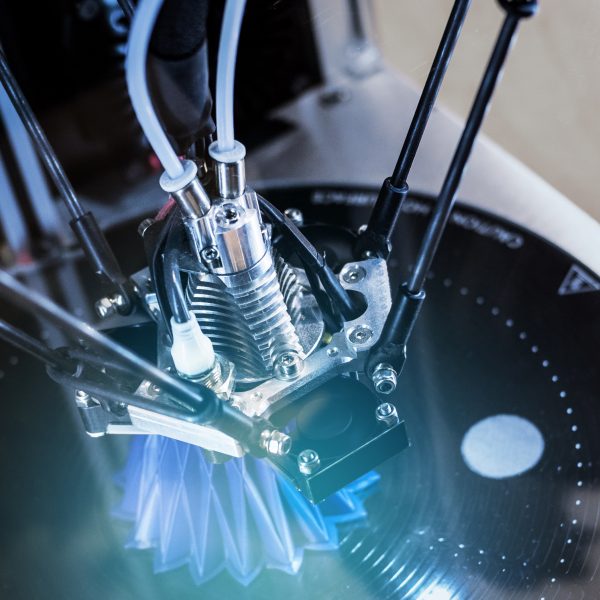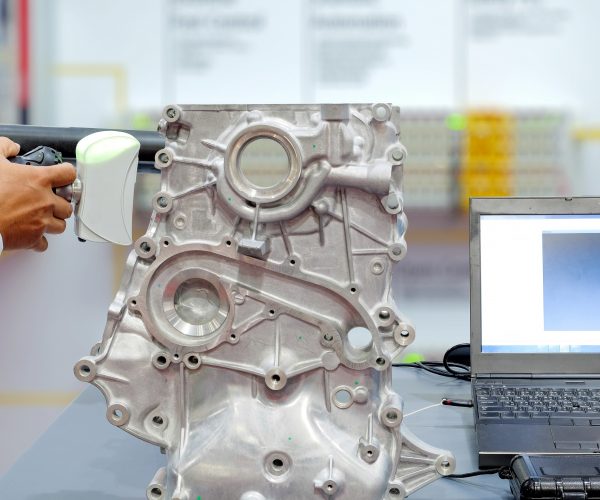Software
Reverse Engineering Software & Applications
Reverse Engineering Services
Reverse engineering or back engineering is the process by which a man-made object is deconstructed to reveal its designs, architecture, code, or to extract knowledge from the object; its something like scientific research.
Reverse engineering (often abbreviated to RE) is used to summarise the process of reconstructing an existing object. When designing an object from scratch, an engineer will draw up a design specification and produce drawings from which the item is constructed.
Conversely, with reverse engineering, the design engineer starts with the final product and works through the design process in the opposite direction to arrive at the product design specification. During the process, vital information about the design concept and manufacturing methods is discovered.
The process of reverse engineering begins by gaining dimensional information of the object via, 3D scanning, whether it is a mechanical component, a consumer product, or an ancient artifact.
Reverse engineering involves acquiring three-dimensional positional data in the point cloud. The accuracy of the data captured will impact the quality and deviation of the Reverse Engineered model when compared to the original.


The practice, taken from older industries, is frequently used on computer hardware and software as well. Software reverse engineering involves reversing a program’s machine code back into the source code that was written using program language statements.
The main purpose of reverse engineering is to provide manufacturers with information about the design of a product or component. When done successfully, reverse engineering gives you a virtual copy of the blueprint that went into the original design.
It is perhaps the most accurate way to recreate the designs for items that went out of production decades ago. In cases where the original blueprints are long lost or destroyed, reverse engineering perhaps is the only way to bring such products back to life. If you can obtain a working model of an old product, you can typically trace the steps of its design and use those insights to construct a new model, repair a part, or improve future products.
At Maxellence Engineering Technologies we offer reverse engineering for organizations in various sectors, including aerospace medical industry electronics and so on.
Geomagic Design-X
Ultimate Scan to CAD Reverse Engineering Software
The only parametric reverse engineering solution in the market. Trusted by OEMs around the world for Automotive, Aerospace & Defence, Power Equipment, Medical Equipment & Industrial Goods. The only solution to partner almost all major OEM Scanning & CMM equipment with built in plugins for seamless work flow.
Geomagic Control-X
Ultimate Quality, Inspection & CMM Probing SoftwareThe only parametric quality & inspection software in the market. With automated report generation with 3D Scan vs CAD comparisons, linear, radial & angular dimensions checking, GD&T parameters checking & bespoke studies. The only software to have built in plugins for all major CMM and Scanners OEMs for seamless work flow.
Important uses of reverse engineering.
1. Legacy Parts Replacement
One of the most common reverse engineering applications is legacy parts replacement, which involves examining and reproducing select parts of larger machines to keep them in operation.
For example, a factory might have a large engine compartment that keeps the entire conveyor system running through each day’s work shift. Every once in awhile, one of the machine parts will wear out and need to be replaced. If the machine is old, certain parts might no longer be in production, either because the OEM no longer makes the part or the part is out of business.
While the factory could make a huge investment in a new conveyor system, the preferable option is to retain the same equipment and replace the faulty part. With reverse engineering, you can use a 3D scanner to digitally replicate the design of the defective part. From there, a new copy of the component can be created and installed into the machine.
Depending on the size and complexity of the component, the initial cost to have it reverse engineered could exceed the price of a newer or different model. However, once you have created a digital copy of the original design and successfully replicated the part, you can use that information to recreate the component again and again. Reverse engineering allows you to reproduce parts that work in your preferred mechanical setups, regardless of whether the original manufacturers are still in business.
2. Parts Service or Repair
If a legacy part or a component the OEM no longer supports needs repair or service, it’s useful to have an understanding of how the product works. This knowledge can help to complete the repair accurately and efficiently. If there aren’t any design documents available, a company may use reverse engineering to create them. You can then use this information to inform how you repair or service the part. The data you gain from reverse engineering can help you determine which components you need to replace to fix a given problem. It can also inform your repair process by helping you better understand how best to access, remove, and replace a certain part.
3. Failure Analysis
Reverse engineering techniques can play a valuable role in failure analysis. If a machine fails, you may need to take it apart or examine design files to determine the problem. Once you have the information about the problem, you know how to fix or improve the product so that it functions properly again.
Examining a product using reverse engineering can reveal damaged parts of faulty designs. Looking at digital design files created through reverse engineering can also reveal flaws and help inform how you plan to repair a piece of equipment.
4. Parts Improvement
Reverse engineering is also used for parts improvement. You might need to alter a component after conducting failure analysis, or a particular part might just be due for an upgrade. If no replacement or alternative part is available in the market, you can have the part reverse engineered to create a copy of the original design. From there, you can modify the design for improved performance.
If a machine requires stronger joints or weld reinforcements, the faulty parts will be examined for their measurements and redesigned with an increased thickness or stronger metals. Through reverse engineering, you can determine which dimensions must be maintained and which aspects you can change. If you could combine two or more parts into a single, more functional component, reverse engineering could bring that fact to light.
5. Diagnostics and Problem-Solving
Reverse engineering can also be used for diagnostics and problem-solving in a sequence of industrial processes. In a factory setting, the flow of operations can sometimes slow due to a faulty or underperforming function. When a manufacturing system consists of numerous machines and components, it can be difficult to pinpoint the source of the problem. Through reverse engineering, you can determine how everything works as one and use that knowledge to identify where things can and do go wrong.
